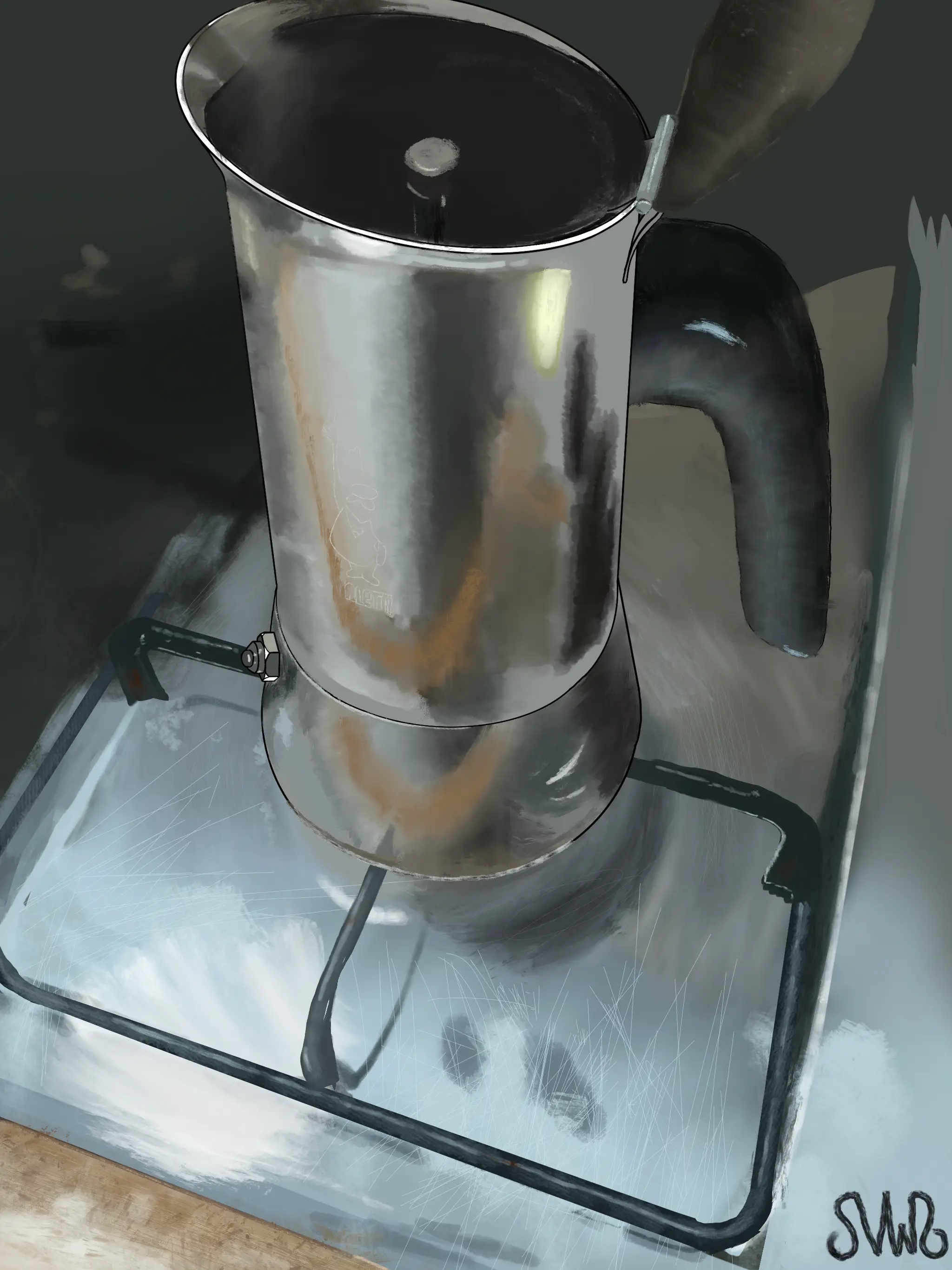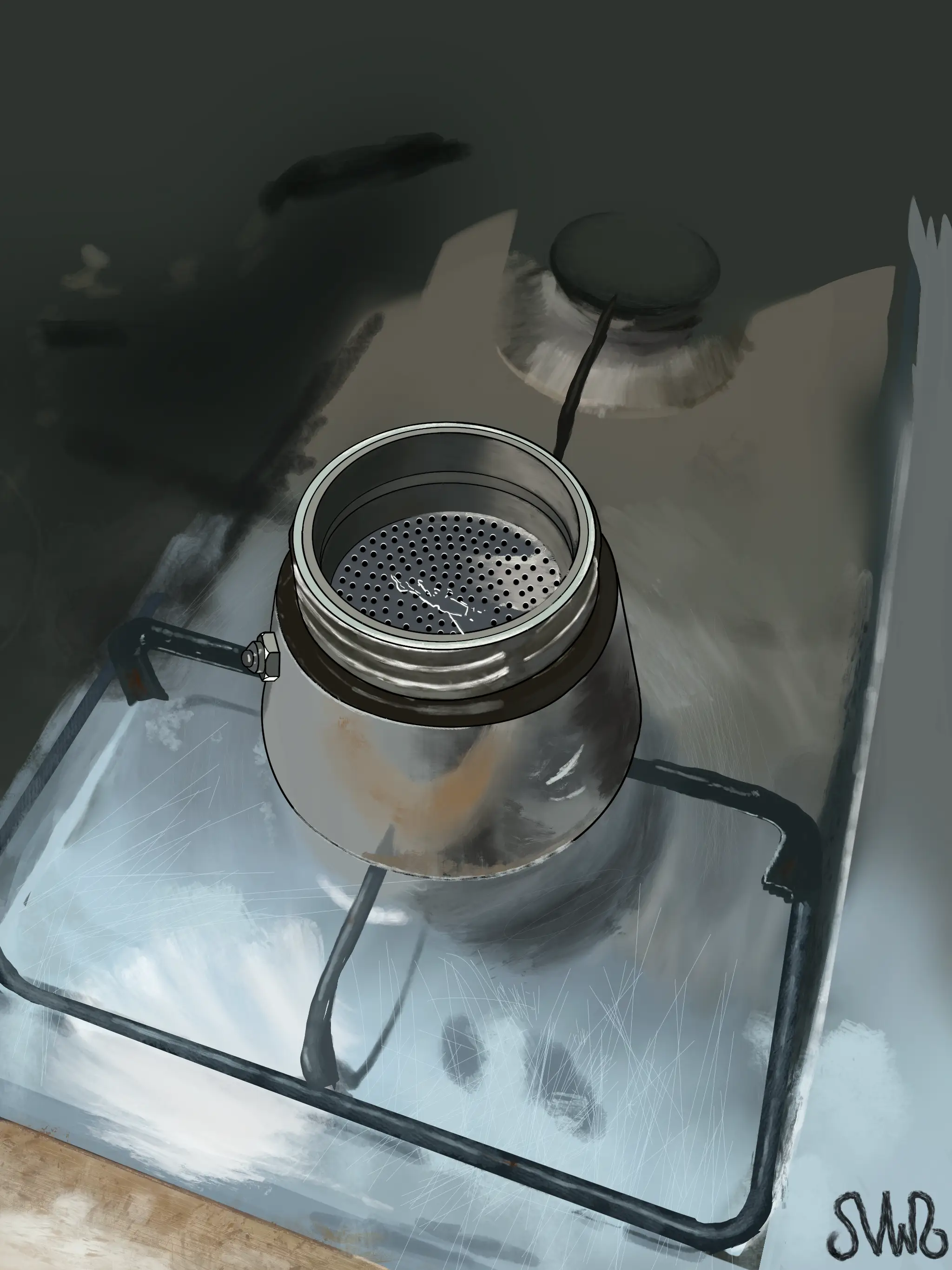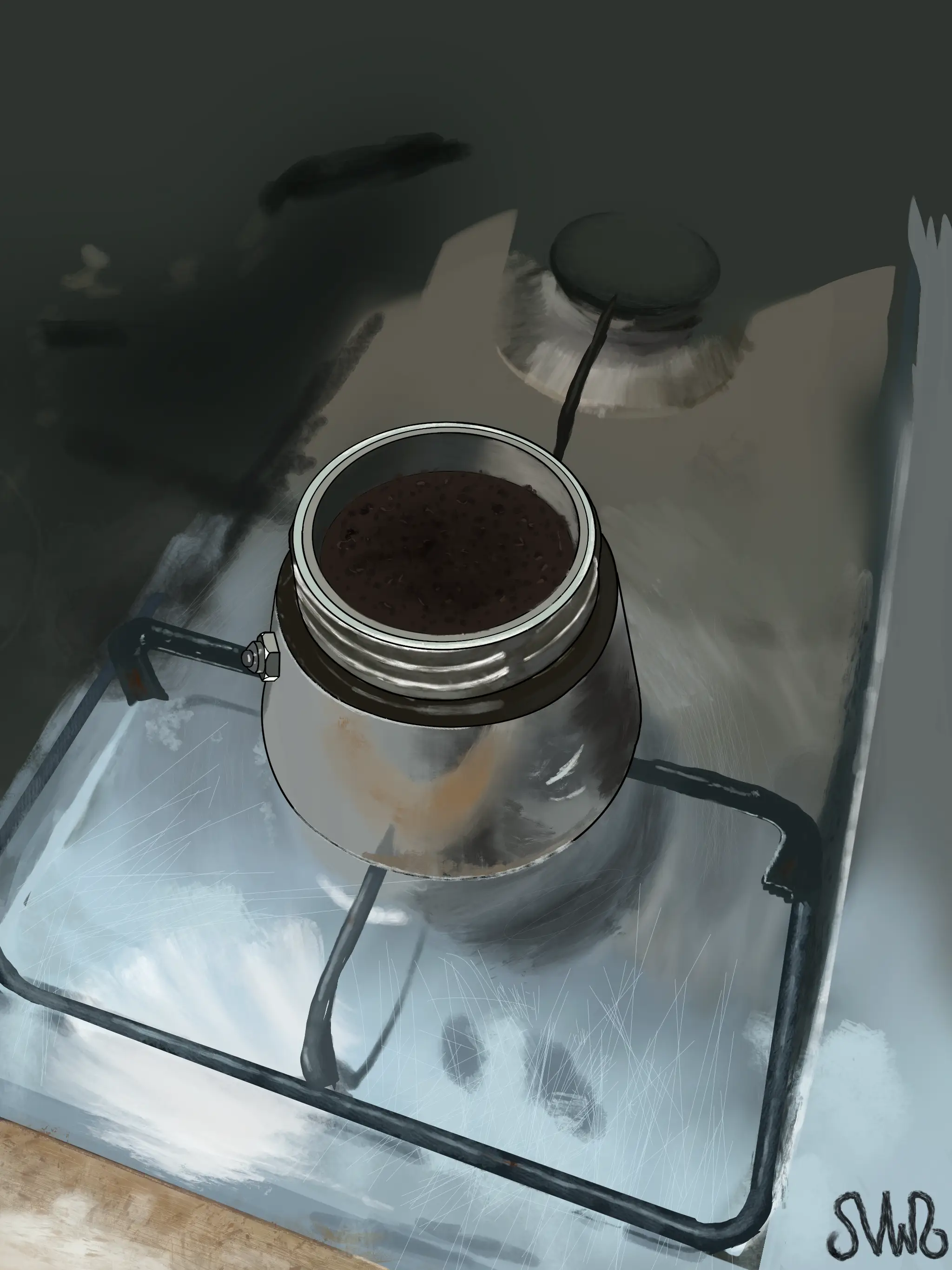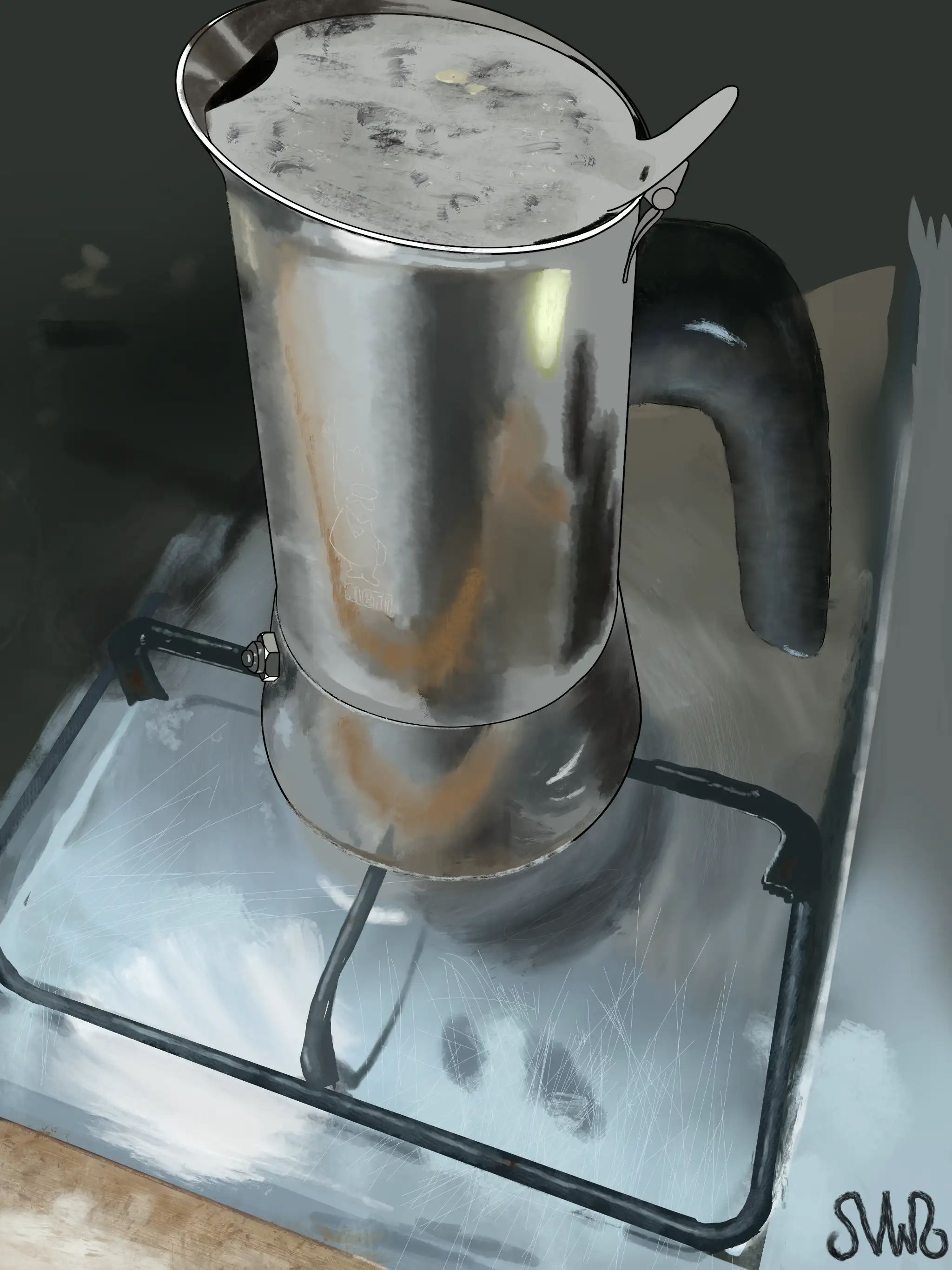Finally Found the Best Way to Make (Filter) Coffee
The answer is probably not what you're expecting, and it's so shameful in its implementation that I'm not surprised that no one’s ever tried it before. Nonetheless, this technique surpasses all others in overall excellence: the perfect balance of taste, convenience, and consistency.

So enough beating around the bush! Here's how you do it. I call it the "modified moka".
How to Make it
You will need a medium-sized moka (a '6 cup' one, and I recommend stainless steel for the sake of durability). In Italy, a standard Bialetti branded one can be had for about €26 on sale; a bargain for the lifelong café lungo pleasure cruise you're about to embark on. Then, all you do is prepare the coffee normally, but with half the normal amount of coffee. That's it!
The reason why this works is because the 6-cup Moka is intended to make enough coffee for 2-4 people. Since mokas produce a more concentrated form of coffee, the amount of liquid you end up with is the same as a pour-over for one person.
So it's simple to make; however, for those who've never made a moka pot, I have taken the steps of making oil paintings depicting the process. Read on, or otherwise see the further discussion below for why I think this technique is superior to all others.
How to Make it (Told in impasto)
- Take your moka , fill the reservoir with water, and add the coffee basket.

- Fill the coffee basket up to the halfway point (about 16g of coffee).

- Screw the top back on, and brew the coffee.

È voila! You're done.
The Origins of Modified Moka's Discovery
One day, I woke up late, felt tired and haggard, and came to the kitchen only to find disappointment. I had forgotten to buy coffee. There was some coffee, but not enough to use the moka. My smaller moka was also packed away in storage. Then it occurred to me, "Wait, who said it has to be full?" I filled it up as much as I could, said a prayer, and to my extreme surprise it was an outstanding cup of filtered coffee!
Then it occurred to me, "Wait, who said it has to be full?" I filled it up as much as I could, said a prayer, and to my extreme surprise it was an outstanding cup of filtered coffee!
Further Discussion
One thing you may be wondering is, "Doesn't it need to be filled all the way to work properly?".
The simple answer is, apparently not, since it works fine without it. The longer answer is that although there is less coffee than the moka was designed for, there is still enough to expand the coffee grounds and form a tight seal with the top. In other words, throughout this brewing process, the coffee grinds get wet, become saturated, and expand, and their resulting size is just enough to still form a seal with the top, which creates pressure.
The next thing you may be asking yourself is, "What makes this the 'best' way to make coffee? Isn't that a little subjective?”
Great question! It is subjective, and I say it's best because that's what I decided. However, I also think it's best because I am lazy, but also like good coffee. If you enjoy doing lots of work to make your coffee, then you may not realize that best for you is awful for me! Some people like doing a lot of work, and only partially get their satisfaction from enjoying the fruits of their labor. I am one of them! However, for coffee, I really don't care, I just want good coffee! Anyways, let me explain better why this is the best way to make filtered coffee.
The most important criterion is taste. We are also taking into consideration the technique, as this is for filtered coffee. An espresso with water added is good, but it's not brewed coffee. With this in mind, the modified moka does brew coffee that tastes fantastic! I would say it's about 90% as good as the best pour-over, and would maybe taste even better if I just used nicer coffee.
The second priority is convenience. For a long time, I made coffee with the Aeropress because it too tastes good and is easy; however, the Moka is even more convenient, I've realized. For one thing, the Aeropress is a little awkward with all of its tubes and can become quite top-heavy (you will know what I mean if you've ever knocked over an Aeropress and had to clean it). Plus, with it, you always need a kettle to boil the water first. On the other hand, the Moka is about the same size but is made out of durable stainless steel, can be placed directly on any kind of stovetop, and ends up being about as easy to clean as the Aeropress. Also, the Moka is the cheapest option, as it works with any kind of coffee and includes a kettle.
The final attribute to measure is consistency, and here the modified Moka wins again. It will always produce the same great-tasting coffee. Pour-overs require a little time and attention to make, and without doing it just right, you don't get a good result. Even Aeropresses can be finicky, with a lot of variables that can be different from moment to moment without you even realizing it.
I'm happy to hear arguments to the contrary. If you disagree or you have something to teach me, then please let me know!
(I haven't even mentioned pour-overs because while they may be the best in terms of taste, it's not a competitive technique in terms of convenience and consistency.)
Read on for a more detailed analysis of how I ranked every filtered coffee style.
Overview of All Filtered Coffee Styles, Ranked
Here is a summary of every way I can think of to make filtered coffee:
| category/weight | Moka | Aeropress | French Press | pour over | Turkish/Polish style [1] | instant coffee | Nespresso | "Mr. Coffee" |
|---|---|---|---|---|---|---|---|---|
| Taste (2x) | 9/10 | 9/10 | 7/10 | 10/10 | 5/10 | 3/10 | 4/10 | 5/10 |
| Convenience (1.5x) | 8/10 | 7/10 | 7/10 | 4/10 | 6/10 | 9/10 | 6/10 | 5/10 |
| Consistency (1x) | 9/10 | 7/10 | 8/10 | 3/10 | 10/10 | 9/10 | 10/10 | 7/10 |
| Total | 39 | 35.5 | 32.5 | 29 | 29 | 28.5 | 27 | 24.5 |
And the results are:
- modified moka (39 pts): tastes good, is cheap to buy and easy to use, makes nearly the same cup each time.
- Aeropress (35.5 pts): also tastes very good, but is a little harder to use and can be somewhat temperamental.
- French press (32.5 pts): pretty good taste, easy/cheap to use (but they often break), and are very consistent.
- pour over (29 pts): excellent taste, requires commitment to use, and are wildly inconsistent from brew to brew.
- Turkish/Polish[1] style (29 pts): average taste, convenient to make but not to drink, and extremely consistent.
- instant coffee (28.5 pts): not good taste! however extremely cheap and convenient, and consistent, although they do get stale.
- Nespresso (27 pts): better than instant! easy to make except the pods are very expensive, and they do get points for being extremely consistent.
- "Mr. Coffee" (24.5 pts): better than Nespresso! easy to make at home, and also fairly consistent until they require cleaning.
So there you have it. That's why. We could argue about how we weight each category, or even if we value completely different categories altogether. However, assuming the criteria I've put here, I think the modified moka is the clear winner.
If it's so great, why hasn't it been done before?
The reason it's taken so long to discover this style of making filtered coffee is that it's an absolutely shameful way to make coffee for an Italian, and absolutely nobody in Italy would ever dream of bringing so much dishonor upon their family. The moka is an Italian device, and they don't understand filtered coffee. Although I do think they can be a bit performative and unnecessarily dense about the subject, it also does make a bit of sense from their point of view. The kind of coffee we're talking about would have to be explained to an Italian more like tea. In any case, I think this is why in Italy no one makes coffee this way, and Italy accounts for the majority of moka usage.
As for the rest of the world? I don't know; perhaps other people do drink it like this, but I've never heard of it before.